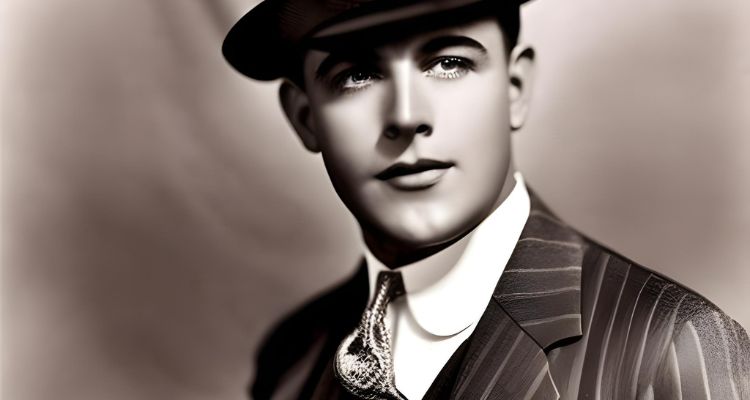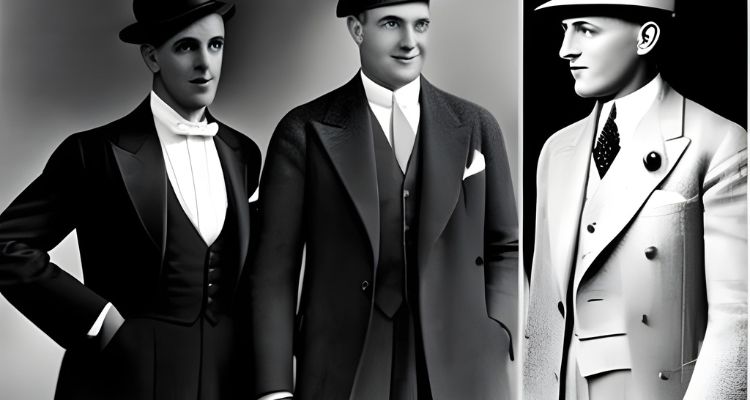The 1920s fashion male era, often referred to as the “Roaring Twenties,” is widely recognized for its iconic flapper style, which symbolized the changing attitudes and liberation of women during that time. However, the fashion of men during this era is often overlooked and overshadowed by the flapper craze. This is a disservice to the diverse and unique styles that were popular among men during the 1920s.
1920s fashion male during this era marked a significant shift away from the formal and rigid styles of the previous era and instead embraced more relaxed and casual styles that were influenced by the Jazz Age and the Great Gatsby. In this article, we will explore the diversity of 1920s fashion for men, including various styles, trends, and iconic figures who helped shape the era’s fashion. By delving into the different fashion styles that were popular among men in the 1920s, we can gain a deeper appreciation of how this era marked a significant turning point in fashion history.
I. Overview of 1920s fashion male
The 1920s fashion male era was marked by a significant departure from the formal attire of the previous era, with a shift towards more relaxed and casual styles. Men’s fashion during this era was characterized by a focus on comfort and practicality, with an emphasis on simplicity and functionality. The typical men’s outfit of the 1920s consisted of a suit, waistcoat, trousers, and a shirt. Suits were usually made from lightweight materials such as wool and were designed to fit loosely around the body, providing maximum comfort and mobility.

The Jazz Age was one of the most significant influences on men’s fashion during the 1920s. Jazz music was becoming increasingly popular during this time, and the fashion of the era reflected this cultural shift. Men’s clothing began to incorporate more relaxed and casual styles, with a focus on comfort and practicality. The Great Gatsby also played a significant role in shaping 1920s fashion male during 1920s, with its iconic portrayal of the wealthy, fashionable elite of the era. The film’s costumes, designed by Catherine Martin, showcased the extravagant and luxurious styles of the time, featuring vibrant colors, luxurious fabrics, and elaborate detailing.
Despite the overall shift towards more relaxed and casual styles, there were still notable variations in1920s fashion male. For instance, while the typical suit of the era featured a loose fit, there were also more tailored and fitted options available for those who preferred a more formal look. Additionally, different regions, classes, and ethnic groups had their own unique styles and trends that contributed to the diversity of men’s fashion during this era.
In summary, 1920s fashion male during the 1920s was marked by a departure from the formal attire of the previous era, with a focus on more relaxed and casual styles. Influenced by the Jazz Age and the Great Gatsby, men’s fashion of the 1920s was designed for maximum comfort and practicality, while still incorporating luxurious fabrics, vibrant colors, and elaborate detailing. Despite the overall shift towards a more relaxed style, there were still notable variations in men’s fashion during this era that contributed to its diversity.
II. The Diversity of 1920s Men’s Fashion
While the typical men’s fashion of the 1920s fashion male featured suits, waistcoats, and trousers, there were notable variations in styles and trends across different classes, regions, and ethnic groups. These differences contributed to the diversity of 1920s men’s fashion and allowed individuals to express their unique styles and personalities.

One of the most notable variations in 1920s fashion male during this era was the style of suits. While the typical suit of the era featured a loose fit and a long jacket, there were also more fitted and tailored options available for those who preferred a more formal look. In addition, different regions had their own unique styles of suits, such as the English-inspired Norfolk jacket, which was popular in the United States during this time.
Trousers were also an important part of men’s fashion during the 1920s fashion male, with several styles available to suit different tastes and preferences. One popular style was the Oxford baggy, which featured loose-fitting pants that tapered at the ankle. Another popular style was the knickerbocker, which featured knee-length pants that were often worn with long socks and golf shoes.
Accessories were also an important aspect of men’s fashion during the 1920s. Hats were a common accessory, with the bowler hat and fedora being two popular options. Ties were also an essential accessory, with the wide and colorful Art Deco ties being a defining feature of men’s fashion during this era. Shoes were another important accessory, with the classic Oxford shoe being a popular choice for formal occasions, while the more casual saddle shoe was a popular option for everyday wear.
The diversity of 1920s fashion male was not limited to clothing and accessories. Different ethnic groups and subcultures had their own unique styles and trends, which contributed to the overall diversity of the era. African American men, for instance, often wore zoot suits, which were loose-fitting suits with exaggerated features such as padded shoulders and wide lapels. Italian Americans, on the other hand, often wore sharp and tailored suits that reflected their status as successful businessmen.
In summary, the diversity of 1920s fashion male was shaped by variations in styles and trends across different classes, regions, and ethnic groups. Suits, trousers, hats, ties, and shoes were all important aspects of men’s fashion during this era, with different styles available to suit different tastes and preferences. The diversity of men’s fashion during the 1920s reflected the changing times and allowed individuals to express their unique styles and personalities.
III. Men’s Fashion Icons of the 1920s
The 1920s was a decade of fashion innovation, and several men emerged as fashion icons during this era. These men helped to shape the style of the time and inspire others to follow their lead. Here are some of the most notable men’s fashion icons of the 1920s:
The Great Gatsby:
F. Scott Fitzgerald’s fictional character Jay Gatsby became an instant style icon with his portrayal in the 1925 novel The Great Gatsby. The character was known for his extravagant and luxurious wardrobe, featuring tailored suits, silk shirts, and bold accessories. The 2013 film adaptation of the novel further popularized Gatsby’s style, with Leonardo DiCaprio’s portrayal of the character inspiring a new wave of interest in 1920s men’s fashion.
Al Capone:
Chicago gangster Al Capone was another notable fashion icon of the 1920s. He was known for his sharp and tailored suits, often accessorized with a fedora hat and a cigar. His style embodied the image of the wealthy, powerful, and stylish gangster of the era.
Rudolph Valentino:
As a leading actor of the silent film era, Rudolph Valentino’s on-screen style had a significant impact on men’s fashion during the 1920s. He was known for his impeccable tailoring and refined sense of style, which helped to popularize the double-breasted suit and the silk shirt.
Duke Ellington:
As a jazz musician and bandleader, Duke Ellington was a fashion icon of the 1920s. He was known for his dapper and sophisticated style, often featuring bold and colorful suits, patterned ties, and a signature top hat.
Harold Lloyd:
As a popular comedian and actor of the silent film era, Harold Lloyd’s style helped to popularize the casual and relaxed styles of the 1920s. He was often seen in loose-fitting sweaters, knickers, and caps, which embodied the sporty and leisurely style of the time.
In summary, the men’s fashion icons of the 1920s played a significant role in shaping the style of the era. Their unique sense of style and iconic wardrobe choices helped to popularize trends and inspire others to follow their lead. The Great Gatsby, Al Capone, Rudolph Valentino, Duke Ellington, and Harold Lloyd are just a few of the many men who helped to define the fashion of the 1920s.
IV. Conclusion
The 1920s fashion male was a decade of fashion innovation, experimentation, and diversity. From the traditional suits and trousers to the more extravagant zoot suits, the fashion of the era was influenced by various factors such as class, region, and ethnicity. The fashion icons of the time, such as The Great Gatsby, Al Capone, Rudolph Valentino, Duke Ellington, and Harold Lloyd, helped to shape the style of the era and inspire others to follow their lead.
The fashion of the 1920s reflected the changing times and the desire to break free from traditional styles and norms. The decade marked a shift towards a more relaxed and casual style, with the emergence of sportswear and leisure wear. It also marked the rise of mass-produced clothing, which made fashionable clothing accessible to a wider range of people.
In conclusion, the diversity and innovation of 1920s men’s fashion continue to inspire and influence fashion today. The style of the era continues to be celebrated and recreated in popular culture, demonstrating its enduring appeal and relevance. The 1920s was a defining era in fashion history, and its impact can still be felt today.

